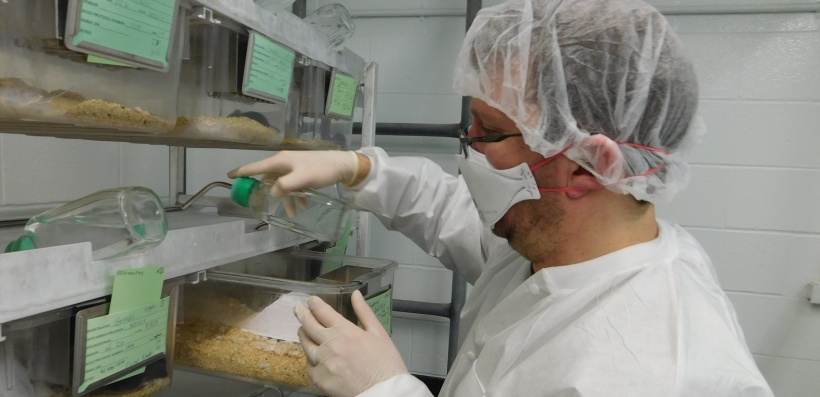
News • Pediatrics
Kawasaki disease: Gaining new insights into a mysterious illness
Texas Biomedical Research Institute and The Children’s Hospital of San Antonio have joined forces to cure a mysterious condition called Kawasaki disease.
The illness which affects young children is named after the Japanese doctor who first described it more than 50 years ago. However, researchers still do not know what causes the rashes, fever, and artery damage. Some type of infectious agent is suspected. Dr. Mark Gorelik, a pediatric rheumatologist with The Children’s Hospital of San Antonio and Baylor College of Medicine, is focusing his research on the role of a specific protein in creating the coronary artery aneurysms in Kawasaki disease patients. He treats patients with Kawasaki disease in an outpatient clinic at the downtown hospital. When he needed a place for his mouse-animal model and experiments, he approached Scientist Jean Patterson, Ph.D., of Texas Biomedical Research Institute. She agreed to be his mentor and help him secure funding for the project.
Most virologists, maybe bacteriologists, have always sort of had a passing interest in Kawasaki disease just because nobody knows what causes it
Jean Patterson
“Most virologists, maybe bacteriologists, have always sort of had a passing interest in Kawasaki disease just because nobody knows what causes it,” Dr. Patterson said. “It seems like by now we should have been able to figure it out. There’s some mystery here that keeps it really tantalizing and frustrating.” Drs. Gorelik and Patterson secured funding from the Voelcker Fund Young Investigators Award, the William and Ella Owens Medical Research Foundation and the Vasculitis Foundation.
Gorelik started with just a few mice. Now, there are about 120 animals housed in a Biosafety Level 2 facility at Texas Biomed. He’s using new technology to manipulate a gene and look at its impact on one particular protein that may be involved in damage to blood vessels. “It’s amazing the kind of technology that exists nowadays that you can actually sort of turn on something to clip out a very precise set of DNA and then the protein goes away,” Dr. Gorelik commented.
With the animals, labs, technology and personnel in place, Dr. Patterson said Texas Biomed is a good fit for a collaboration with The Children’s Hospital of San Antonio, crediting the veterinarians and veterinary care along with Dr. Gorelik’s mouse model. “Research institutes like the Texas Biomedical Research Institute bring all of the necessary factors together that allow researchers to spark combustion in science,” Dr. Gorelik stressed.
Source: Texas Biomedical Research Institute
17.02.2018









